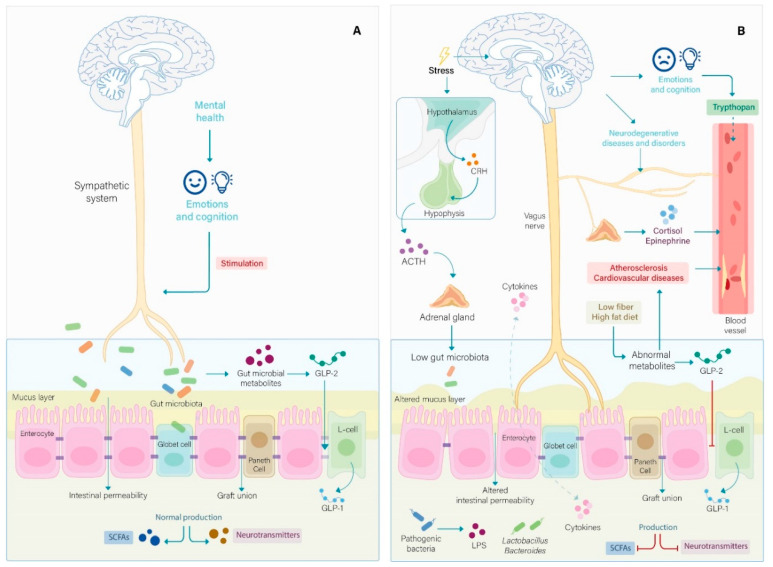Figure 1.
(A) The healthy microbiota mainly indicates genera Lactobacilli and Bacteroides that maintain a normal production of short chain fatty acids (SCFAs) and neurotransmitters such as serotonin, giving a better response to stress and returning to the basal state. The intestinal microbiota, when in balance (Eubiosis), allow an interaction with the vague nerve that maintains the normal metabolism of tryptophan, a precursor of serotonin, and the secretion of gamma aminobutyric acid to generate a healthy psychological and emotional state, in addition to maintaining adequate intestinal secretion and motility. The reduction in pathogenic bacteria in the intestine is controlled by the beneficial microbiota, and the secretion of antimicrobials by the Paneth cells increases the production of glucagon-like peptide (GLP1) that exerts beneficial effects on the metabolism of glucose and glucagon-like peptide-2 (GLP2) that maintains the integrity of the membrane. (B) Dysbiosis refers to a reduced community of beneficial bacteria and an increased number of pathogenic bacteria. When there is stress, the HPA axis and the sympathetic system are deregulated; therefore, the adrenal glands maintain elevated levels of cortisol, epinephrine, and norepinephrine; this leads to a constant feedback to stress with the reduction in SCFAs and the alteration of neurotransmitter levels. The heart rate and energy requirements increase, causing the consumption of a caloric diet. The low-fiber, high-fat diet causes the fermentation of metabolites by the intestinal microbiota to be abnormal. The production of the GLP2 peptide is decreased; therefore, intestinal permeability is increased; this allows the increase in pathogenic bacteria and lipopolysaccharides (LPS), causing loss of intestinal function.

